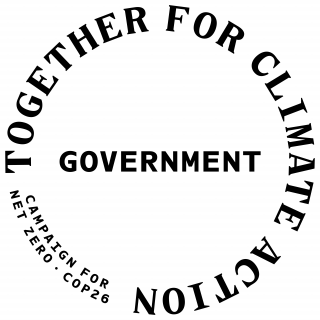The Climate Policy Baseline of the ‘Big Four’ – China, the EU, India and the US
19 October 2021

Context for this note
As recently appointed editor of Magazine of the European Association of Environmental and Resource Economists (EAERE), I decided to devote all four issues in 2021 in part to the fulfilment of an ambition to advance understanding of climate policy as regards the ‘Big Four’ – China, the EU, India and the US: they account for about 60% of global emissions and wield enormous influence globally. If they fail, we all fail.
One section of Issue 11 provided two framing papers, followed by four papers successively addressing: climate policy architecture, domestic climate policy – looking back; domestic climate policy – looking forward; climate policy diplomacy, for the US. In successive issues 12 (China), 13 (European Union) and 14 (India) the same template was applied.
These papers are now all compiled in Convery, F.J., & Johnson, K. (Eds.). (2021). available for free at: https://www.eaere.org/magazine/
The hope is that these papers will contribute to a shared understanding of ways of thinking and working; knowledge of past achievements and plans; and engagement with those outside, and that this shared understanding will animate an interest in collaborating to advance climate ambition: regardless of whatever forms it takes, collaboration by any two is likely to be greater than the sum of two individual efforts, and this multiplier effect will grow if collaboration extends to three or four.
What have we learned?
As I read through these papers, I kept encountering areas where the Big Four could learn a lot from each other and that action in concert by two or more of them in one or more of these could help them accelerate and perhaps deepen progress.
Two examples from the four Climate Policy Architecture papers:
From Capitals to Grassroots: Outcomes will be enabled by Beijing, Brussels, New Delhi, and Washington DC, but action will happen (or not) far away, where decisions are made by households, in factories, fields, offices and by businesses, communities and municipalities; and these in turn will be shaped profoundly by the values attitudes and skills of their governments at the next level, and their willingness to embrace the climate challenge. In the climate policy architecture papers, we learn how each of the Big Four addresses climate policy at the next level - Provinces in the case of China, Member States in the case of the EU, States in the case of India and the US. It is striking how different the relationships and modalities are. There are many reasons why serious effort should focus on how to maximize the climate contribution at this level [1] and there could be a very productive cross-pollination of ideas as to what works, including addressing the needs of regions with low incomes [2].
Combining Singularity of Focus with Economic Integration: It is now clear that all four jurisdictions have decided that the only way forward to successfully address the reduction of greenhouse gas emissions and carbon storage at scale, and to do so quickly, is to transform their economies across the board in ways that make key economic sectors partners in this transformation. This poses a challenge, because much of the existing climate policy architecture has had a mandate to focus singularly on climate and environment, and this has been very important in ensuring that there are voices at the decision-making tables with a mandate and a mission. How to maintain this focus, while at the same time integrating the climate mission with the wider economy? The Chinese experience and practise are interesting. Up to 2018, China’s Climate Authority was based the National Development and Reform Commission (NDRC) which is “China’s national economic authority and formulates and implements the state’s development strategies, middle- and long-term development programs” and this was probably important in ensuring that climate policies and actions were included in the 14th Five-Year Plan (2021-2025). In March 2018, the authority for climate issues was transferred from the National Development and Reform Commission (NDRC) to the newly restructured Ministry of Ecology and Environment (MEE) (China, 2018). This provided singular focus and integration with air quality policy but weakened the integration with wider economic policy. China has now moved to a hybrid: In March 2021, part of the authority moved back to NDRC in the roadmap design, aiming to peak emissions before 2030 [3].
You will see that there are similar narratives for the EU, India and the US. Are there ways in which two or more could work together to learn from each other as to how best to combine singular focus and integration in ways that deliver outcomes at scale?
A request to UCL
I think that this volume provides useful insights as to where, as regards climate policy, each of the Big Four have been, where they are going, and the policy architecture and diplomacy they are using to make progress. But vision without action is hallucination; it will only help if folk from these jurisdictions begin to explore ways in which collaboration between two or more could help the whole be more than the sum of the parts.
Universities are the ideal place to start thinking and doing in this space. Students and faculty from the four jurisdictions can get together and begin to deepen understanding and explore options. As the latter crystallize into possibilities, they can engage informally with aspects of their own policy systems to explore what might work in practise. It is 59 years since Ken Arrow (1962), made the point that “technical change in general can be ascribed to experience, that it is the very activity of production which gives rise to problems from which favourable responses are selected over time” [4]. It would be great if UCL could integrate this learning by doing idea into its future thinking and action on climate change.
In text references
- One is speed: the process of formulating a State Council regulation on China’s national emissions trading system was initiated in 2014 and is still under way; the Standing Committees of the Beijing Municipal People’s Congress passed a decision on an emissions trading system within 2 years after the development process was initiated, laying a solid legal basis for the operation of the local carbon market
- It may be Euro chauvinism on my part, but I think that the EU experience is especially interesting, because it has had to find ways that work to integrate 27 sovereign states of wide-ranging per capita income (the Luxemburg/Romania ratio is 12/1) into its climate policy framework
- See Duan, Maosheng, 2021. ‘Climate Policy Architecture in China’
- Arrow, Kenneth J. (1962). The Economic Implications of Learning by Doing Author(s). The Review of Economic Studies, 29(3): 155-173, p. 156
 Close
Close


